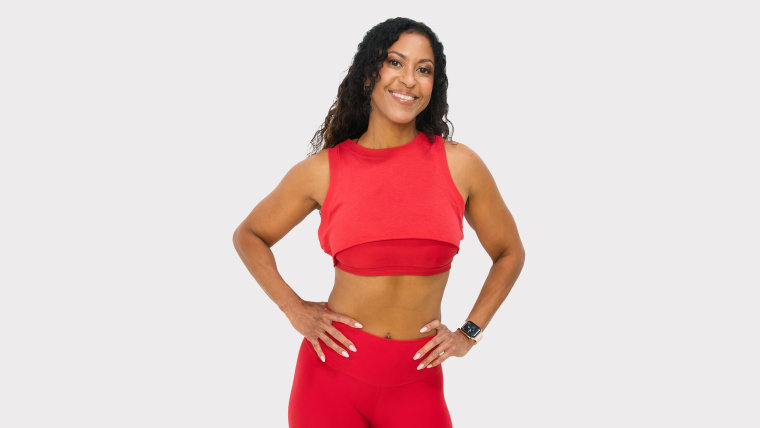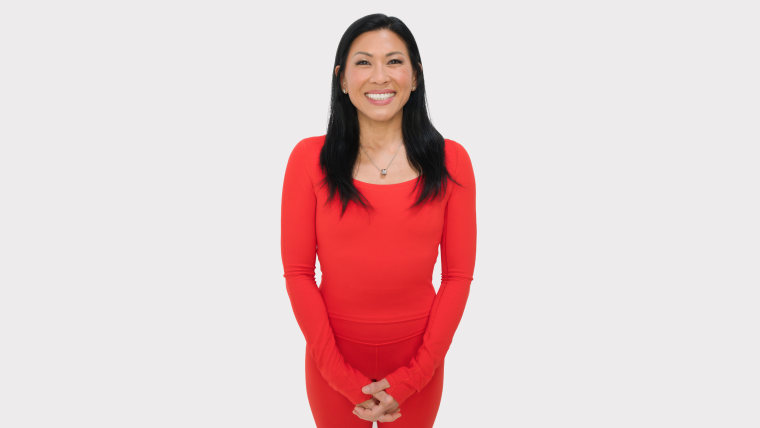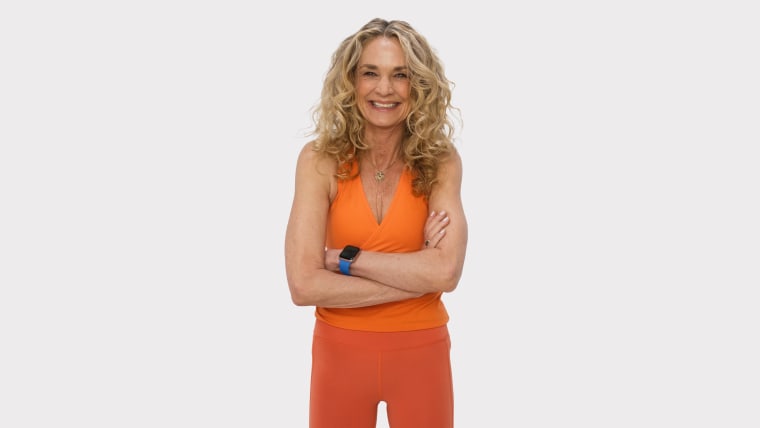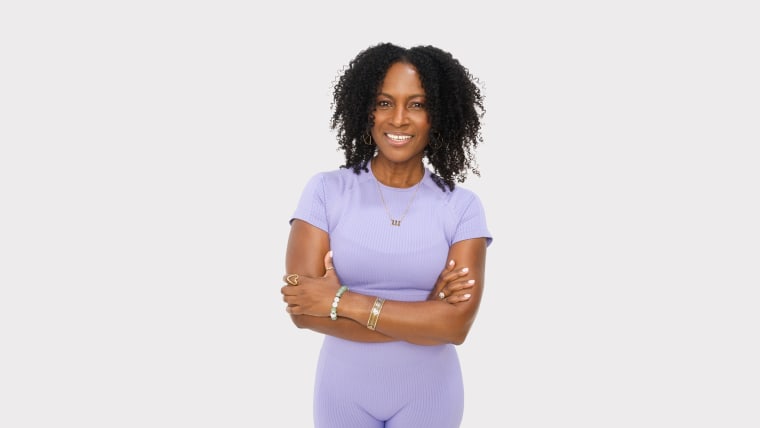For 31-day healthy aging plan, including daily strength, mobility, yoga and meditation routines —plus meal plans, walking podcasts and inspiration — download the Start TODAY app!
As we age, there are certain health barriers women must navigate: menopause and other hormonal changes can affect our metabolism and lead to weight gain, family and work obligations leave little time for self care, not to mention the natural loss of muscle mass and bone density we battle starting at age 30.
While it may feel like the cards are stacked against you when it comes to getting in shape, physically and mentally, it’s not impossible. Our Start TODAY trainers over 50 years old are prime examples of how it can be done.
They have cracked the code to healthy aging so we tapped them for their top tips for keeping your health a priority as you get older and making adjustments to your routine that will help you actually see results — and most importantly, live a happier, more contented life. Here’s what they had to say.

Choose strength training over cardio as the foundation of your fitness routine
Many women tend to gravitate toward cardio-focused workouts. Think: running or spin class. And while these activities are great for our cardiovascular health, the fact that we start losing 3-8% of our muscle per decade after age 30 makes prioritizing strength training essential.
“As we age, muscle mass declines due to a process called sarcopenia. Strength training helps counteract this loss, preserving muscle and functional ability,” says Natalie Yco, 57-year-old Start TODAY trainer and creator of the “Best Butt Ever” program for Equinox. “Strength training also helps improve bone density, metabolic health, functional strength, mental well-being and cognitive function. It’s a holistic approach to promoting longevity and enhancing the quality of life.”
These benefits become even more important pre- and post-menopause. “Menopause leads to a decline in estrogen, which can affect muscle mass and bone density. Strength training helps counteract these changes by stimulating muscle growth and enhancing bone health,” says Yco. “It’s also helpful for cognitive function, improving insulin resistance, boosts our metabolism to help improve body composition.”
Yco’s middle-aged clients notice significant changes in their body composition and strength, but the most profound change she sees from committing to a strength-training routine is their boost in mood and self-esteem.
Yco says she, too, has used strength training to help her navigate menopause. “My focus is on lifting heavy weights 3-4 times a week, combined with high-intensity interval training (HIIT) or sprint intervals twice a week,” she says. “However, menopause has prompted me to adapt my strength training routine to incorporate more recovery, mobility work, and flexibility exercises to prevent injuries. I typically push hard for 2-3 weeks and then take a deload week or two, always listening to my body. Plus, I walk daily, which I absolutely love! Not only does it increase my non-exercise activity thermogenesis (NEAT), but it also helps boost my mood!”
>>Get a full-body strength routine from Natalie Yco.

Think of mobility as a workout — and do it at least 3 times a week to avoid injury and pain
“Mobility is extremely important as we age. We typically get stiffer and less mobile so making sure to maintain motion in our joints and soft tissues is crucial for overall health,” says Dr. Karena Wu, 51, Start TODAY trainer and Owner of ActiveCare Physical Therapy. “Our joints sit the deepest, so motion here means the overlying soft tissue will be more pliable and malleable, which means better control, circulation, range of motion, balance and performance. Having a full range of motion allows for the best muscle activation so exercises can work the soft tissues through the entire range.”
Wu says that the loss of muscle mass as we age, combined with the hormonal stress of menopause, can impact our stability and strength, which can lead to pain and injury. “In my experience, clients that have good mobility have had less injuries and have been able to recover more quickly,” she adds. “Mobility allows for better neuromuscular communication and improved circulation and blood flow. All of these can help with avoiding injuries and allowing for normal function with no limitations, compensations or perceptions of pain.”
Wu has dealt with her own injuries over the years and felt the benefit of making mobility a priority in her routine. “I have absolutely felt the effects of attending to my mobility. I have knee osteoarthritis and the muscles are perpetually weak around my knee joint,” she says. “When I make sure my hips are moving appropriately, I feel better kinematics in my knee joint in things like squatting to the floor or going down stairs … I feel less pain and can move through more range of motion.”
Her number one tip for beginners? “People forget that stretching and mobilization is a ‘workout.’ It is an integral part of health and wellness and should be incorporated at least a couple of times during the week, depending on your condition and health status,” she says. Like all movement, start slow. “Learn how the body moves, feel the tissue tensions and listen to what your body is telling you. Stretching brings about a ‘stretch pain’ but it should never be excruciating or that uncomfortable where you do not look forward to participating in the activity. You should feel light and loose and limber and feel like your motion and function are much more free!”
>>Dr. Karena Wu shares 4 exercises to improve strength and mobility as we age.

Use yoga for less anxiety and mood swings, more confidence and a better sex life
“As we age, especially moving through perimenopause and post menopause, the practice becomes even more essential,” says Colleen Saidman Yee, Start TODAY fitness trainer, founder of the Yoga Shanti studio and author of the best-selling book “Yoga for Life.” “It keeps us strong, steady and deeply connected to ourselves.” This is true in all stages of life, but especially when navigating menopause. “The hormonal shifts of menopause can be intense, but they also bring freedom. It’s like the veil lifts — you start seeing what matters and what doesn’t. Many women, including myself, become more aware of their sensuality. We often hear that sex lives improve. Yoga plays a huge role in that — it keeps you embodied, awake to sensation, confident in your own skin.”
As an instructor for over 25 years, Saidman Yee says she has seen people completely transform, “not just in how they move, but in how they live. Students come to yoga for flexibility or strength, but they stay because they start feeling more whole. Their relationships deepen, their reactions soften, they begin to breathe again — really breathe. The medical, emotional and aging benefits are endless. The consistency creates a safe space in their nervous system, a kind of inner refuge they can return to again and again.”
At 65, Saidman Yee continues to listen to her body and make adjustments to her own practice. “We start to recognize what truly nourishes us. I’ve come to find that restorative poses, breath work, and meditation are just as — if not more — important. My practice at 65 is a world apart from my practice at 35. I used to push, strive, perform. Now, I listen. I soften. I let my breath lead instead of my ego,” she says. “I’ve dealt with injuries, surgeries, and the wear and tear of life in a body that’s been through a lot. But yoga has been my through-line. It’s taught me to treat myself like someone I love. These days, I prioritize restorative poses, breathwork and a whole lot of savasana. Grace is more important to me now than grit.”
Yoga regulates our nervous system. It helps with the anxiety, mood swings and sleep disturbances that often come with menopause. It’s a steady hand on your back when everything else feels like it’s changing.
Colleen saidman yee
And this applies to our emotional health, too. “We begin to retire some of our people-pleasing tendencies. There’s simply not as much energy for anything that isn’t real,” says Saidman Yee. “With age comes wisdom, and with wisdom comes a deeper ability to listen — yoga sharpens that inner ear and helps us act from what we know to be true. The physical practice keeps our joints lubricated, our muscles toned, and our bones weight-bearing, which is so important as estrogen levels drop and bone density can decrease. But beyond the physical, yoga regulates our nervous system. It helps with the anxiety, mood swings, and sleep disturbances that often come with menopause. It’s a steady hand on your back when everything else feels like it’s changing.”
If you feel intimidated by yoga, Saidman Yee wants to bust the myth that you need to be flexible to participate. “That’s like thinking you need to be clean before you take a shower. Just come as you are. Start with simple poses. like cat cow, downward dog, warrior 2 and child’s pose. Get to know your breath. That’s the real yoga, anyway.”
“The best mindset is curiosity, not judgment,” she adds. “And be consistent: 10 minutes a day is better than 90 minutes once a month. Let it be messy, let it be yours, and let it be enough.”
>>Check out this beginner yoga routine from Colleen Saidman Yee.

Lean into meditation as a tool to help navigate life changes
Aging inevitably comes with difficult transitions and changes in our emotional state can make them even more difficult to navigate. The goal of somatic practice — both seated meditation and movement — is to release tension and enhance the mind-body connection to better cope with these changes.
“As we age, our nervous system becomes more sensitive to stress and hormonal shifts. Perimenopause and menopause can really disrupt sleep, emotional balance and overall energy,” says Faith Hunter, 54, Start TODAY trainer, yoga and meditation instructor and somatic healing expert. “Somatic movement and meditation help calm the body, regulate the nervous system, and create a deeper sense of safety within. For women in midlife, it’s about reclaiming the body as a place of wisdom and healing, not something to push through or ignore.”
Hunter says she has seen women reconnect with their body in beautiful ways. “They sleep better, feel less anxious, and start moving through the world with more softness and confidence,” she says. “These practices create a deeper emotional resilience, and that’s especially powerful during life transitions — whether it’s menopause, grief, burnout or reinvention. One of the most common things I hear is, ‘I feel like I’m finally coming home to myself.’
These practices create a deeper emotional resilience and that’s especially powerful during life transitions — whether it’s menopause, grief, burnout or reinvention. One of the most common things I hear is, ‘I feel like I’m finally coming home to myself.’
Faith hunter
As she has gotten older, somatic practice has taught Hunter to listen to her body and move in a way that supports healing, not depletion. “In my younger years, I thrived on intensity, but in my 40s and 50s, my body started asking for something different—something more nurturing,” she says. “Meditation has always been the anchor that helps me regulate my emotions, reduce anxiety and build clarity. The older I get, the more I honor ease, softness, and intuitive movement as essential forms of wellness.”
It may sound overwhelming if mindfulness or meditation is not something you currently practice, but starting can be simple. “Release the need to ‘do it right.’ This isn’t about performance — it’s about connection,” says Hunter. “A few minutes of gentle movement or conscious breathing each day can change everything. Focus on how it feels, not how it looks. Try soft, intuitive exercises like gentle stretching, body tapping or even somatic shaking. And remember: consistency over intensity. Let your body lead and give yourself grace.”
Put these tips into practice with our 31-day healthy aging challenge! The trainers put together a holistic plan that combines strength, yoga, mobility and meditation. To join, download the Start TODAY app!



